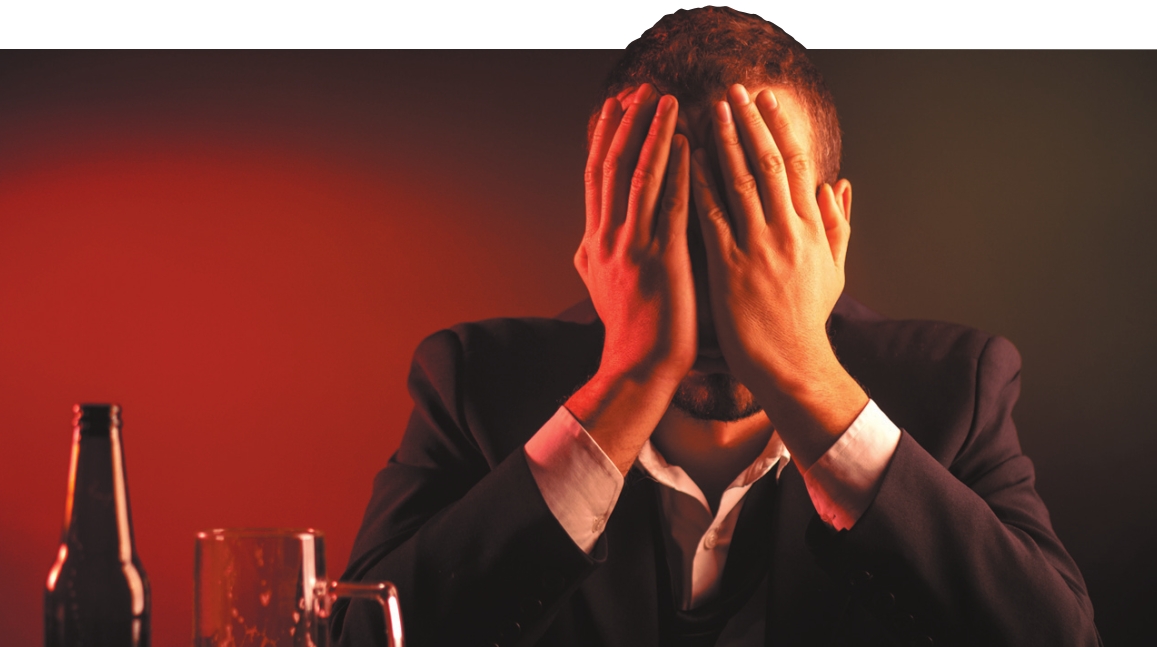ADDICTION: FROM SIN TO DISEASE

Social drinking has progressed from being seen by some as simply a sinful activity to our current understanding of chemical addiction as a treatable disorder. It’s been a long road, but we can say that the outlook for people with addiction is far improved over what it was even a decade ago.
If you think about it, even normal alcohol use is unsavory to some. Alcohol addiction (alcoholism) is something completely different from social drinking. Many people are still convinced that alcoholics are not sick, they’re just bad people getting worse by the day!
Let’s eavesdrop on two situations, or scenarios. They’re very different – in fact, essentially different – from one another, although to a casual observer, they may appear identical.
Scenario One: Normal, recreational drinkers go to a bar. They enter the barfully conscious of their environment. They have one or two drinks, then they leave, having experienced the diversion of having their mood elevated slightly by moderate use of alcohol. For them, the emphasis is on socializing, not drinking.
Scenario Two: In contrast, seemingly normal, seemingly recreational drinkers go to a bar. A casual observer might think they were seeing a normal drinker entering the building to have some diversion, but let’s look at these people more closely. These people enter the bar already partially disoriented, “unplugged” from the reality around them, even before they take the first drink of the evening. Addictive drinkers (alcoholics) believe they can control their intake of alcohol. When they drink, they’re triggered to want to drink more. Their emphasis is on drinking, not socializing.
Much of society has frowned on drinking in general and on addictive drinking in particular. Just imagine the challenge and stigma both to people affected with alcohol addiction and to those who would help them when faced with such anger and, often, shaming.
Alcoholics and those encountering them are unaware that an alcoholic isn’t and never has been a recreational drinker. They don’t realize that the alcoholic has a pre-existing problem, the roots of which are there, deep in the brain, even before he or she ever takes their first drink. The problem may only recently have become detectable, but the vulnerability to develop it has been there all along.
There’s recreational drinking, and then there’s addiction. To a casual observer, recreational drinking and addiction look alike at first, but they have little in common. True social drinking is done by conscious choice; it’s voluntary. Addictive drinking is involuntary.
Alcoholics and other addicts are victims of a brain-based “domino effect,” in which their ability to self-determine their voluntary behavior is impaired. Since we know that craving alcohol isn’t normal, what brings it about? Abnormal, out-of-control appetites created by genetics, possibly trauma, and exposure to alcohol. At first, alcoholics resemble – and think themselves to be – people out for entertainment, people who can drink in moderation, making a conscious decision to do so. They aren’t.
Over time, alcoholics think themselves to be people willfully committing sinful acts in spending and losing money, people who are too stupid or selfish to see the need to drink in moderation or just stop. They aren’t.

In due time, alcoholics think themselves to be people who are out of control of their behavior. They are.
If I have a seizure and, in my flailing about, accidentally hit you, is that a good thing? No. Is it a bad thing to deliberately hit someone? Yes. Did I hit you voluntarily? No, because at that moment, I had no ability not to flail about, and my hitting you was an unfortunate accident. Later, when I come back to myself, I’ll feel remorse.
A seizure is the no-fault result of problems in the electrochemical activity in parts of the brain. Seizure disorder produces potentially dangerous, involuntary behavior. People with seizure disorder aren’t being selfish or uncaring. However you describe it, it isn’t voluntary.
Likewise, addiction is also the no-fault result of problems in the electrochemical activity in other parts of the brain. Addictive disorders also produce potentially dangerous involuntary behavior. However you may describe it, it isn’t voluntary.
How did alcoholism come to be seen as a disease rather than a sin? Education. As clinicians we strive to educate others as broadly as we can. Community education is one of the most important things we do. Why? Because new information can change thinking, and changed thinking alters how the person feels emotionally and how they respond to the challenges imposed by recovery. They see themselves in a different light, and, therefore, behave differently from before. They can become responsible and now stand tall, knowing, as the saying goes, that they’re “not bad people getting good, but sick people getting better by the day!”
Kent Dean, PhD, LAC, has been active in behavioral health counseling since 1975. He is CADA’s (the Council on Alcoholism & Drug Abuse) director of clinical development.
